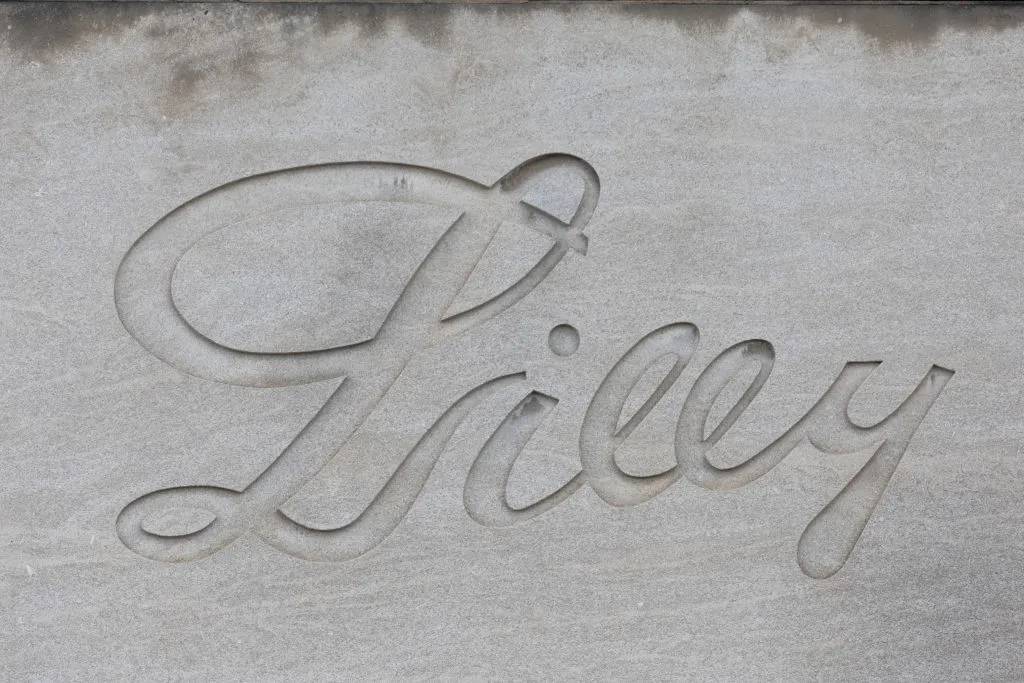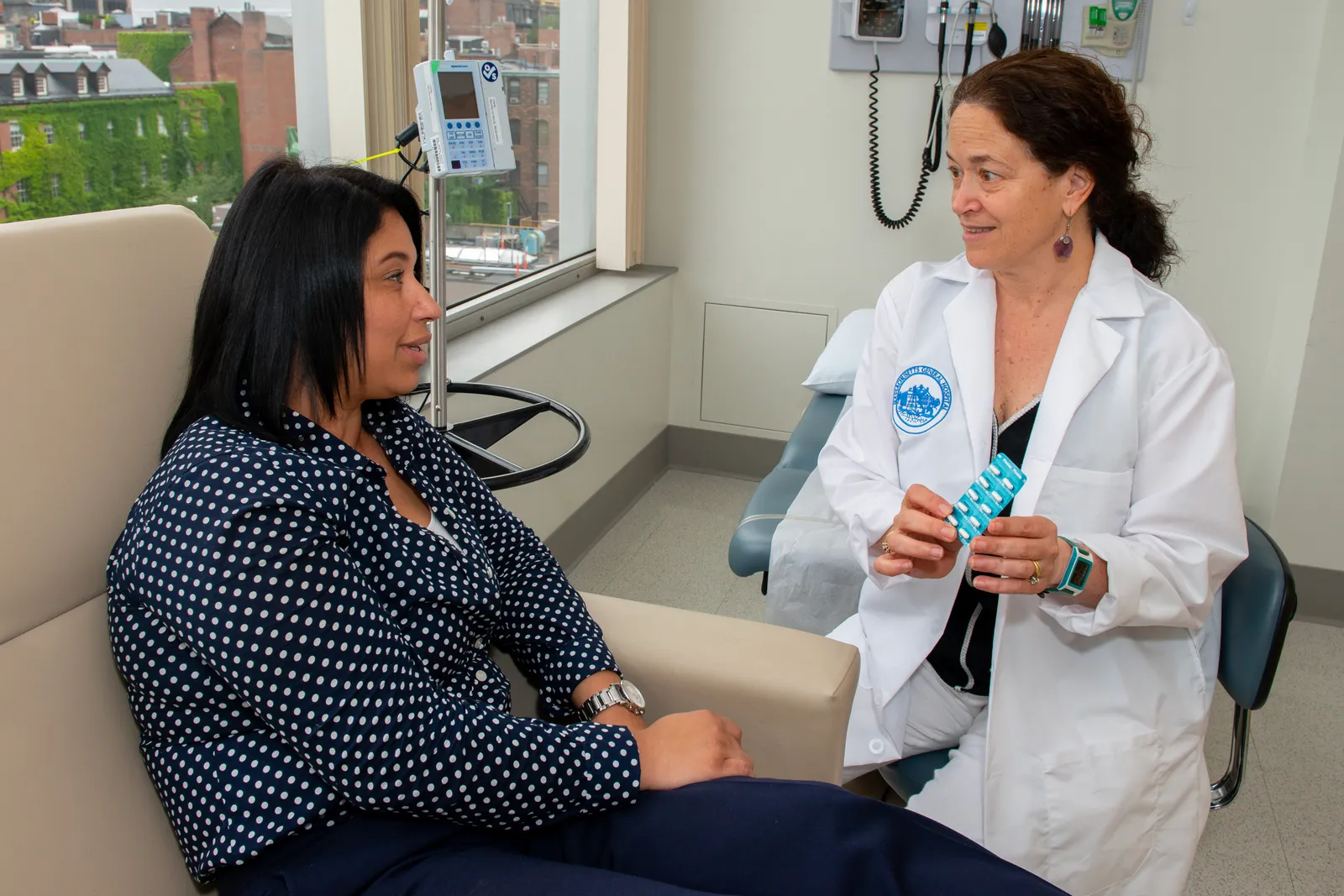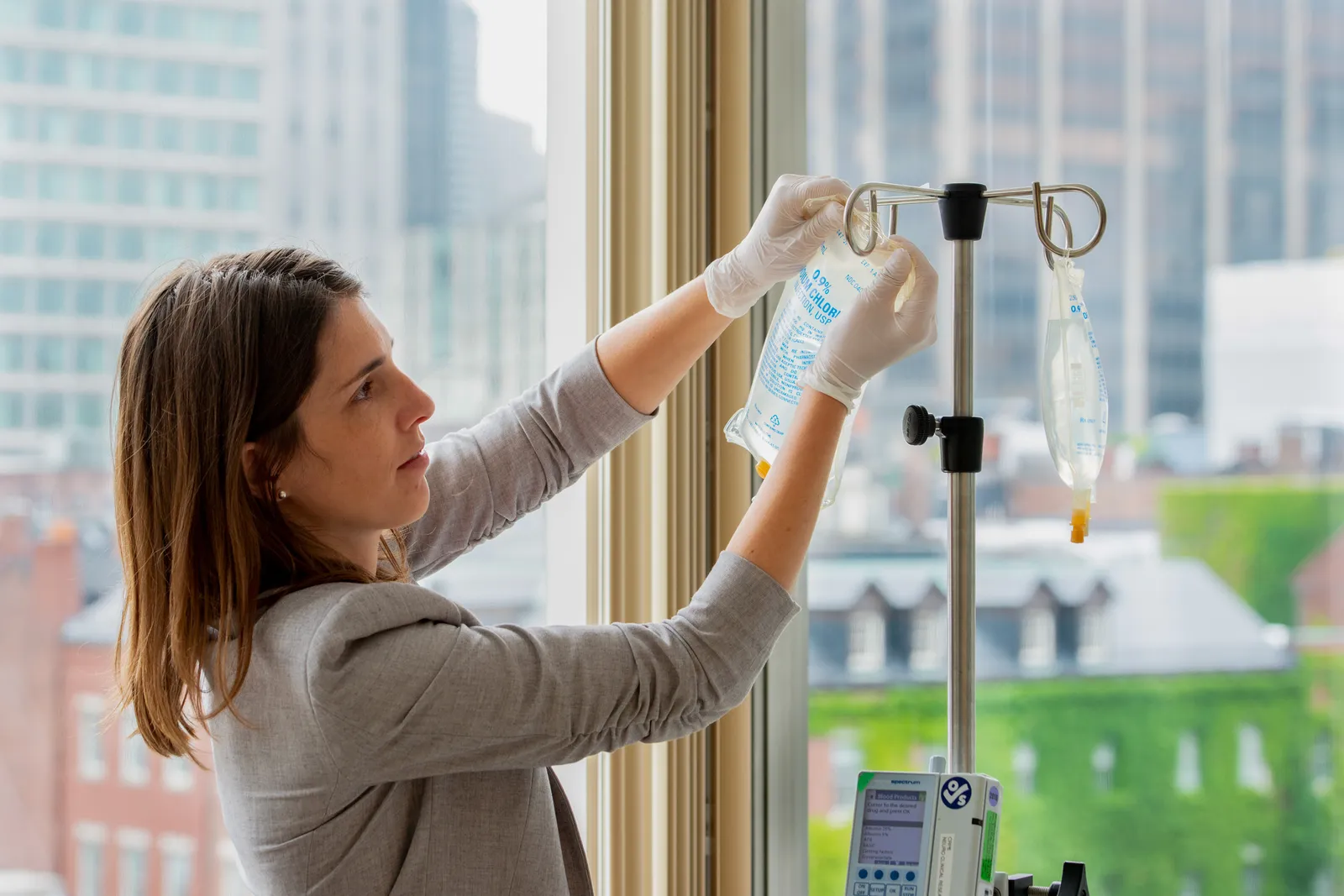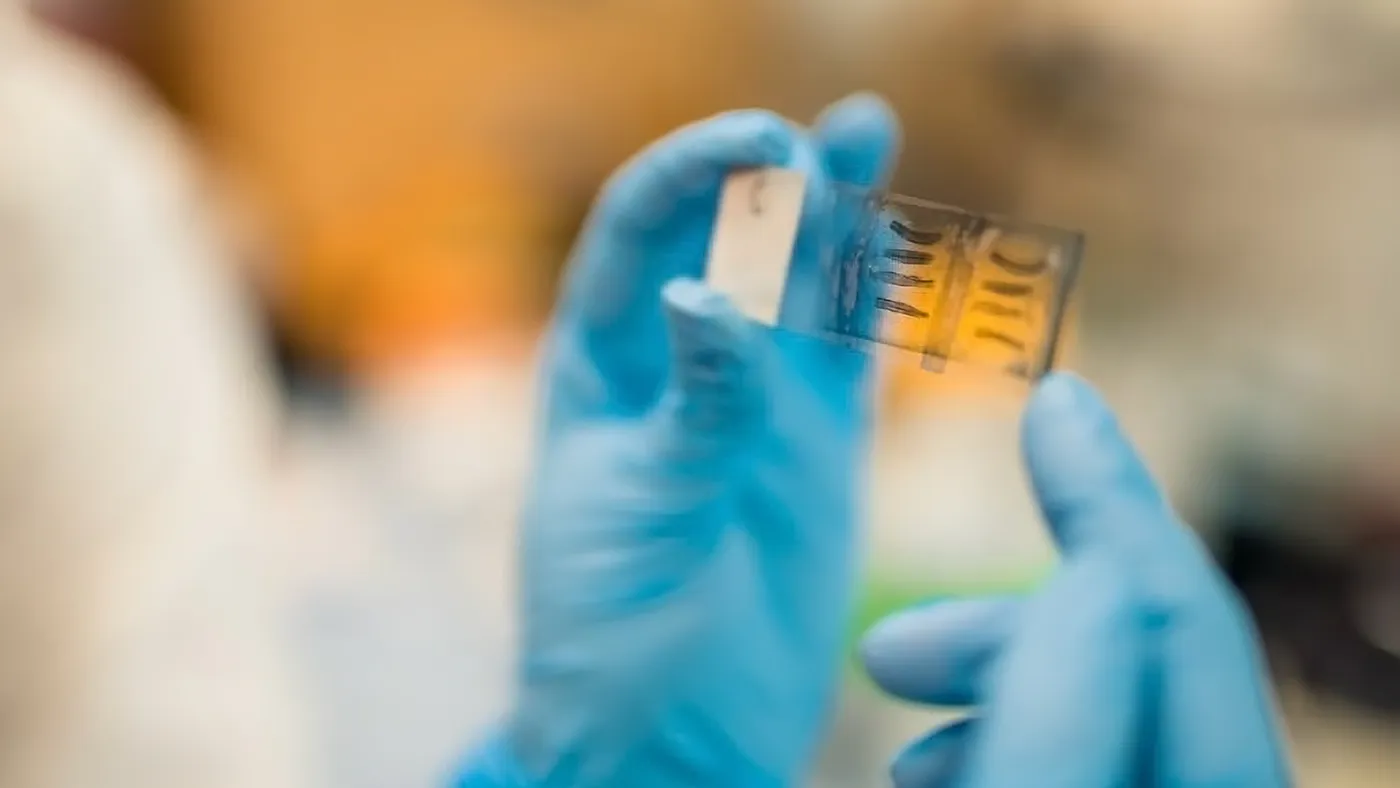
Merit Cudkowicz has spent her career treating some of the most unforgiving illnesses. She’s watched Alzheimer’s disease steal memories and Huntington’s disease take control of muscles. But the cruelest may be ALS, or amyotrophic lateral sclerosis, a rare, fatal condition that leaves patients unable to walk, talk and breathe as their nerve cells rapidly break down.
For years, Cudkowicz has directed the ALS clinic at Massachusetts General Hospital, where she became one of neuroscience’s most regarded voices for her hands-on approach to patient care and knack for getting the brightest researchers to work together. Yet, in spite of her best efforts, the clinic mostly grew at a sluggish pace. That was, until 2018.
The prominent American businessman Sean Healey had recently been diagnosed with ALS. As he looked into various treatment centers, hoping to find somewhere his money could go to good use, the one at Mass General caught his eye.
He soon met with Cudkowicz. “What could make a big difference? Because I might not survive this illness, but I want to make an impact on the field,” she remembers Healey saying. “I want to see that you can work fast. I know these academic places go slowly. Give me a proposal.”
Over the course of many nights, Cudkowicz and her colleagues put to paper a dream years in the making. Developing a drug can easily take a decade or longer — time ALS patients don’t have. What if there was a way to speed up the process, to simultaneously test a bunch of potential therapies instead of the traditional, one-at-a-time approach? Their pitch: a first-of-its-kind trial designed to do just that.
Healey liked it. Together with Affiliated Managers Group, the global asset management firm which he built, Healey gifted the clinic $40 million to launch that so-called platform trial and create endowments to seed a new generation of ALS researchers.
Five years later, the clinic — renamed the Sean M. Healey and AMG Center — is now arguably the most influential force in ALS research and care. It has a staff of more than 150, who provide treatment to around 900 patients. And its contributions have helped bring two new medicines to market, enticing drug companies to make ALS a greater priority.
“It's the forefront of ALS,” said Nivedita Jerath, a medical director at the AdventHealth Neuroscience Institute in Orlando, Florida. “When you think of Healey, that's all you think about. Healey equals ALS.”
In interviews with doctors, patients, drug company executives and the Healey center’s own staff, opinions of the clinic were overwhelmingly positive. Its platform trial remains a standout achievement, earning praise for getting results quickly and inspiring more people to participate in ALS studies. Some experts see it as a blueprint for further ALS clinical research.
Still, Healey’s standing and influence can make it a target for critique. All four drugs initially studied for its trial failed to meet key goals, raising questions about the center’s selection process. More broadly, doctors and drugmakers have found the trial burdensome at times due to the logistical challenges associated with juggling so many therapies.
Perhaps the sharpest assessments of Healey come from within. Cudkowicz wants the trial to move even faster. She’s also concerned some testing sites aren’t well-enough equipped to deal with the influx of interested patients.
“We feel the pressure to do it right,” Cudkowicz said. “So yes, I worry about [our work].”
“We don’t want to be still,” she added. “We’ve got to evolve with the field as we learn more about the disease.”

A pioneering study
Platform trials weren’t a new concept. Oncologists had used the model in experiments like “I-SPY2,” a landmark breast cancer study that received recognition from top officials at the Food and Drug Administration. There were a couple examples in neuroscience, too, like an Alzheimer’s investigation run by the Washington University School of Medicine in St. Louis.
Doing one in ALS, however, was uncharted water, so the Healey team sought outside opinions. They asked patients about what needed improving in clinical trials, spoke to drugmakers about what would keep them from participating in such a study. When companies wanted to know more about how the data would be handled, the center made efforts to put them at ease.
“Even though there are all these platform trials, there's not a lot out there about tricky things like data sharing and when can you publicize results,” Cudkowicz said. “Those kinds of operational things, we just had to spend some time working out.”
Healey also turned to leaders of the cancer platform studies for feedback on whether it was measuring the right outcomes or had enough funding and testing sites.
The center ultimately tried to create an adaptable, multisite trial that would start with a handful of experimental medicines and add more over time. Each arm would test one medicine for six months and compare it against a shared placebo group — effectively maximizing the number of people who end up receiving some kind of therapy. After the six months, volunteers could continue onto an “active treatment extension period,” in which they all can receive the studied medicine.
Importantly, the Healey trial was less strict about who could enter compared to other ALS tests, which, in an effort to get the best possible results, often excluded patients who were too far along in the disease or had concurrent health issues. If patients still didn’t meet the platform trial’s eligibility criteria, they could try some of the medicines through “expanded access protocols.”
“We were confident we could do something that would be a win-win for everyone,” said Sabrina Paganoni, a physician-scientist at Healey and a co-director of Mass General’s Neurology Clinical Research Institute, which studies potential drugs for the brain and nervous system. Cudkowicz established the precursor to that institute in 1994.
With the design in place, Healey put out a call to developers to submit drugs for its study. More than 30 applied, nearly all small biotechnology companies attracted by the center’s deep bench of experts and, crucially, its promise to cover a significant amount of the trial’s costs.
Healey wasn’t accepting just any drug, though. It wanted only candidates that had advanced beyond the first stage of human testing. And for the initial crop, each had to work in a different way biologically.
The center ended up choosing drugs from Clene Nanomedicine, Prilenia Therapeutics, Biohaven Pharmaceutical and Ra Pharmaceuticals. A fifth, from Implicit Biosciences, was offered via expanded access.
“There's an important badge of validation and scientific rigor that accompanies such a program, because so many important minds particular to the ALS space are involved,” said Rob Etherington, CEO of Clene.
For Prilenia, making the cut marked a turning point. The private biotech had been trying to show a drug known as pridopidine could protect nerve cells from degrading. It was all-in preparing a large trial in Huntington’s, and had no intention of branching into ALS, according to CEO Michael Hayden.
But the Healey study proved too tempting. While results later found pridopidine to not be significantly better than a placebo at slowing the disease, Prilenia said after-the-fact analyses suggested the drug benefited certain patients who were rapidly declining. The company is now planning a late-stage program in ALS.
“Without Healey, we would not have done this trial,” said Hayden, who added that he’s known Cudkowicz for a long time, so there was “already a level of trust.”
He isn’t the first to say as much. Ten years ago, two undergraduates at Brown University were investigating whether an experimental medicine they’d dreamt up might be able to combat the destruction of nerve cells. The students, Justin Klee and Josh Cohen, had created a company, Amylyx Pharmaceuticals, and were working through the complex task of pushing their therapy into human testing. Their first target: Alzheimer’s.
In 2014, Klee and Cohen were wrapping up another meeting with Amylyx’s top scientific adviser, the well-known neurologist Rudy Tanzi. But before they could leave, Tanzi stopped them. He said they really needed to talk to the person about to come into his office.
In walked Cudkowicz. Klee and Cohen gave her their elevator pitch, sharing what they had learned about the medicine and their plans to test it against Alzheimer’s. Intrigued, she offered one major piece of advice — start, instead, in ALS.
By the end of that brief introduction, Cudkowicz convinced the Amylyx founders to shift course. She set up meetings with high-profile experts and organizations that raise money for ALS research, connections “well beyond our pedigree” at the time, according to Cohen. “That's really the story of how we got into ALS,” Klee said, “and it centers very squarely on Merit.”
That story would come to define Amylyx and its therapy, which last year won approval in Canada and the U.S. after showing it can keep ALS patients alive and better functioning for a little longer. Amylyx is now profitable — a rare accomplishment for any young biotech. Some Wall Street analysts expect that peak yearly sales of its drug, sold under the brand names Relyvrio and Albrioza, could approach $1 billion.
Around 3,900 of the roughly 30,000 ALS patients in the U.S. were on Relyvrio as of Sept. 30, according to Amylyx.
“It’s a little bit addicting. Once you see the impact a trial like that can have, you want to do it again,” said Paganoni, who piloted the study that led to Relyvrio’s approval. “That’s what I’m hoping to do with the platform trial.”
By early 2020, the Healey team had secured drugs and finalized their trial’s design. They just needed participants.

Finding volunteers
Nick Marchionda first felt something wasn’t right six years ago, when, one evening at dinner, his fingers locked up as he held a fork. A bone doctor suspected arthritis. But that didn’t explain the symptoms to come. By 2020, his balance was increasingly off, leading to multiple falls at the supermarket bakery he’d managed for more than a decade.
A visit to a neurologist soon after confirmed the real culprit was ALS. “Boy, do I miss work,” said Marchionda, now 65, who had to retire early from his baking career in 2021.
The diagnosis marked the onset of an exceptionally difficult couple of years for Marchionda. His wife, Joanne, died from cancer in June. And over the past six months, his disease has worsened to the point where he requires a wheelchair and can no longer use his left arm.
Marchionda considers himself fortunate, though. He learned about the Healey trial from his wife’s oncologist at Mass General and was later one of 163 people selected for “Regimen D” — the arm testing Prilenia’s drug, which he believes helped his breathing and voice. Marchionda has since enrolled in a newer arm evaluating a therapy from Denali Therapeutics. “I want to be part of the solution to ALS,” he said.
Launched just weeks before the COVID-19 pandemic, Healey’s trial faced a three-month enrollment delay as investigators adjusted to working virtually. Yet it wasn’t long before patients flooded ALS clinics across the country with requests to join. Cudkowicz has estimated that the initial arms enrolled two- to three-times faster than is typical for an ALS study.
Years later, interest remains high. In Boise, Idaho, the Saint Alphonsus Regional Medical Center has seen an inflow of ALS patients since becoming a Healey site. It’s currently offering Denali’s candidate and the “Regimen F” therapy developed by Calico Life Sciences, as well as expanded access to the “Regimen E” drug, a type of sugar called trehalose.
According to Jackie Whitesell, a neurologist and site director at Saint Alphonsus, the center now follows about 50 ALS patients each year, including one who recently drove eight hours from Tacoma, Washington, for expanded access to trehalose. The added case load can be especially strenuous for small sites like Whitesell’s, which has at most three researchers at any given time.
In Seattle, the platform trial is so popular it’s edging out other kinds of ALS studies.
“Our department let us know this is what patients want,” said Michael Weiss, director of the neuromuscular diseases division at the University of Washington Medical Center. “So I think Healey is going to be the primary ALS trial design we’re going to be getting patients into, at least for the foreseeable future.”
Healey’s pull isn’t universal, however. In Orlando, Jerath’s clinic, which is not a Healey site, sees about 40 to 60 ALS patients annually. She said not one has brought up the platform trial in the five years she’s worked there.
Cudkowicz and her team try to get the word out. They frequently publish press releases and other news. And they host a weekly webinar providing updates on the platform trial alongside interviews with ALS experts. Even so, there’s a particular subset of patients who have “the bandwidth to be involved” in a study like Healey’s, Whitesell said.
At Jerath’s clinic, most of the patients are older, further along in their disease and don’t want to travel far. So, while open to learning about clinical trials, they’re usually more concerned about maintaining their quality of life or getting insurance to pay for the medication and equipment they need to survive, she said.
Those who have participated in the platform trial report a generally good experience. Whitesell, for instance, hasn’t heard any negative reviews from the patients she’s enrolled. Doctors and drugmakers tend to share those sentiments. “Most of us are big fans of it,” said Weiss, who’s a site investigator.
A platform trial is nonetheless a huge undertaking. Nearly every aspect — from funding each arm, to collecting and reporting data, to reviewing and releasing results — is exponentially more complicated than in a normal study. If these trials do become the standard, ALS researchers will be pressed to knock down the obstacles.
“Anything that is discovered takes weeks to months to have everybody get on the same page,” said Clene’s Etherington. “It's certainly more hoops to jump through … but that's the price one pays to achieve.”
Healey’s trial design has received some scrutiny. Etherington, for one, wonders whether six months is enough time to truly assess a therapy’s effectiveness. Cudkowicz says her team is considering a modification next year that would extend the testing period to eight or nine months. She’d prefer to go in the opposite direction, shortening the period, but that would require methods of measuring disease progression that aren’t yet available.
A longer testing period wouldn’t sit well patients like Mark Reedy, a 67-year-old former attorney who was diagnosed with ALS in May 2022. He participated in the platform trial’s trehalose arm from early February through mid-July, and had planned on continuing during the extension period. But that portion of the study abruptly ended as trehalose’s maker, Seelos Therapeutics, ran into financial problems which precluded it from providing more drug.
Reedy maintains the trial has been a very positive for him, but he’s tired of waiting for results.
“Here it is, five months later, and the data hasn't come out,” he said. “I still don't know if I was on the placebo or the actual substance they use to test. So that's a little frustrating, because time is not on your side when you have this disease.”
There was also a monthslong lull after the pridiopidine arm closed as more drugs were being added to the study. During that stretch, Weiss recalls, “we didn't have any regimens to offer, so there wasn't any reason to even screen new patients.”
The center acknowledges areas where its trial has fallen short and has pledged to make fixes. On a spring webinar, Cudkowicz said she and her team were thrown, too, by the Seelos situation. She apologized to participants in the trehalose arm and promised that such issues would not come up in other regimens.
“You learn from doing a trial that's never been done,” Weiss said. “There are going to be problems you can’t foresee entirely because there's nothing to base your experience on.”

Few successes
Today, more than a century after ALS was discovered, researchers don’t know what causes 90% of cases.
Eminent biotechs like Cephalon and Regeneron Pharmaceuticals got their start trying to answer that question. But the complex biology of ALS, like other brain disorders, tripped up promising drugs time and again, leading academia and the pharmaceutical industry at large to turn their attention elsewhere.
The field only started opening up in the 1990s. A team led by Cudkowicz’s mentor Robert Brown discovered the first gene linked to ALS in 1993. The first FDA-approved medicine for the disease came in 1995.
That same year, Cudkowicz and neurologist Jeremy Shefner co-founded the Northeast ALS Consortium, or “NEALS,” a network of nine sites throughout New England that collaborated on clinical experiments. The NEALS has since ballooned to 140 sites, providing a crucial foundation for the platform trial and many others.
Buy-in from drug developers didn’t come for a while longer. “It was a great clinic day if we got to tell patients about two studies,” said Jen Scalia, a nurse practitioner at Healey, recalling the dearth of clinical research when she joined the center in 2008.
Tides finally began to change in 2014. The viral “Ice Bucket Challenge” trend had raised millions of dollars for ALS research and thrust the disease into the public eye. Around the same time, “right-to-try” laws were catching on in some states, paving another inroad for patients to get ahold of unproven treatments.
In 2017, the FDA approved a second ALS medicine, Radicava. The agency more recently cleared two more options in Relyvrio and Biogen’s Qalsody, a therapy used only in adults with the genetic mutation Brown uncovered 25 years before.
Notably, all four marketed drugs have limited effects. The average life expectancy following an ALS diagnosis continues to be between two and five years. And clinical successes remain elusive; over the past several years, would-be ALS medicines from Biogen, Alexion Pharmaceuticals, BrainStorm Cell Therapeutics, Cytokinetics, Apellis Pharmaceuticals and Wave Life Sciences did not succeed in key studies.
The platform trial has not yet panned out, either. But failures also produce valuable data.
“Learning that something doesn’t work, as a scientist, is a positive thing,” Scalia said. “It’s not what we’re looking for. It’s not what I want. But it helps us be able choose the next drug better, knowing if there’s a certain pathway that may or may not work.”
Scalia has cared for many study participants during her tenure at Healey, and noticed reactions vary when drugs fail. Sometimes they feel validated. “They’ll say, ‘I had an idea. I was hoping more was going to happen. I didn’t feel like it was working.’”
More often they’re upset, worn down by the ever-growing pile of setbacks.
“They have medicines for MS and other diseases that they know will slow down progression,” Marchionda said. “ALS is not there yet, and it frustrates me that they don't have something.”
If there is a common thread, it’s that more ALS patients than ever before are eager to participate in research. “We're finding that the sites don't have the capacity to keep up with the demand for people with ALS who want to be in trials,” Cudkowicz said. “It's a very good problem to have, but it's a huge shift. It used to be that we had a hard time finding people who wanted to be in trials.”
Like Marchionda, Reedy has re-enrolled in the platform trial and has been on Denali’s drug for about three months.
“I realize this is a contribution to the science, so I feel good about that,” he said. “We’ve got to keep moving the ball forward.”
With their study up and running, the Healey team believes adding more drugs will be easier. The trial has set up a total of seven arms to date. “Once you build the infrastructure — the stadium to play many games — then you can be much more efficient,” Paganoni said.
Companies are now submitting drugs for consideration on a rolling basis. The selection rationale is mostly the same, according to Cudkowicz. Applicants should know the doses they intend to test and how their therapies get into the brain. However, one difference from before is an openness to including candidates that overlap in how they work.
Healey’s impact
The Healey center exists, in many ways, as a response to years upon years of ALS being passed over by pharma companies and scientific institutions. Early results from a study — even one as closely watched as the platform trial — aren’t likely to belie its legacy.
Its rise comes at a pivotal time in ALS research. A highly active and organized patient community is demanding more from drug companies, lawmakers and regulators, and has already notched several major victories. In 2021, President Joe Biden signed into law what’s known in short as the “ACT for ALS,” which allocates $100 million annually over a five-year period to foster the discovery of new ALS treatments.
Additionally, the FDA, under pressure, has become more flexible in its evaluation of ALS drugs, as demonstrated in its approvals of Relyvrio and Qalsody.
The platform trial checks many of the boxes patients have campaigned for, with its smaller placebo group, more inclusive recruitment and relatively fast data turnaround. It’s also spurred momentum in the field by attracting investment from smaller biotechs like Prilenia as well as mid-sized drugmakers like Denali.
As the study tests its second wave of drugs, there’s debate over what role the platform design will play in ALS research moving forward. Weiss envisions it becoming the model for evaluating novel therapies and thinks other areas of neurology are “taking notes.” Etherington, conversely, doesn’t expect it to be the “end-all-be-all.”
What experts do seem to have in common is a belief that the recent boom will carry on. “My guess is Healey has just gotten more people involved in trials in general,” said Amylyx’s Cohen. “So I don’t know that it’s dividing the pie. I think they’ve actually made the pie bigger.”
Healey is well-positioned to continue its work. Philanthropic donations and a steady stream of grant funding have, according to Cudkowicz, kept the center “nicely insulated” from the financial challenges facing other hospital-based clinics, including ones in her own department.
Cudkowicz doesn’t want Healey to be the exception. She believes ALS treatment centers need more money — from foundations or pharma companies or the federal government — so they can hire staff whose full-time jobs are educating patients about and enrolling them in clinical trials.
That could further speed up research and development as Sean Healey, who died in 2020, hoped to do with his donation to Mass General five years ago.
“We just can't give up on this illness,” Cudkowicz said. “We're not going to always have home runs. But we can keep learning.”






